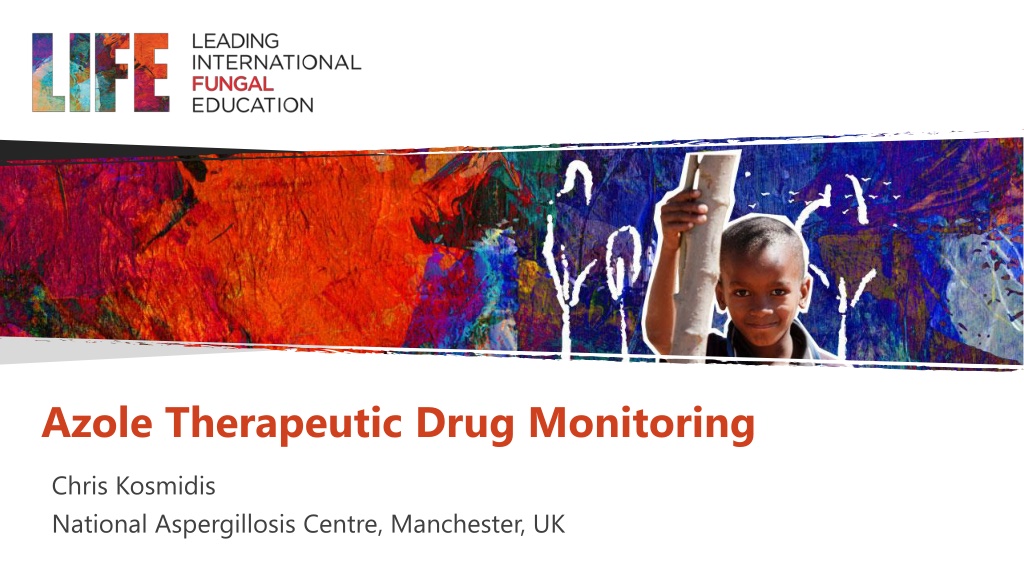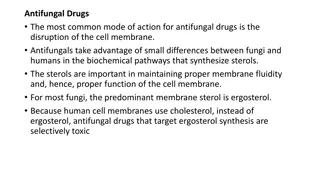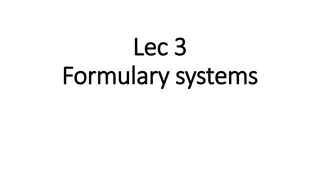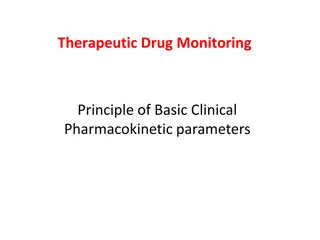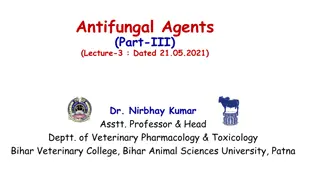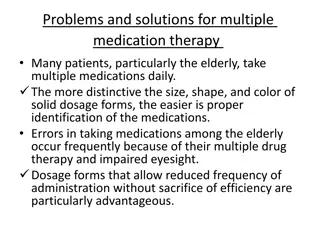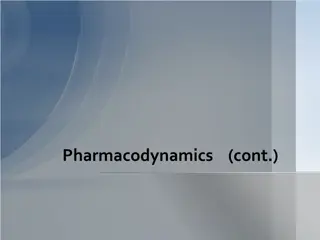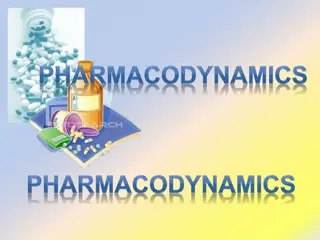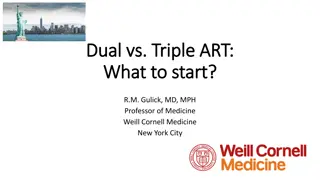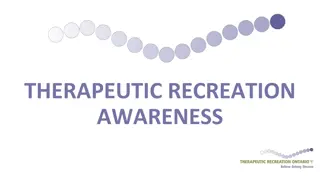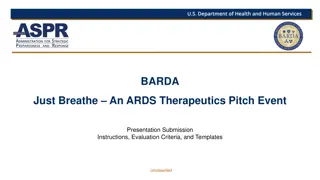Understanding Azole Therapeutic Drug Monitoring for Antifungal Therapy
Azole therapeutic drug monitoring (TDM) is crucial for managing antifungal therapy due to factors like drug interactions, compliance issues, disease severity, and pharmacokinetic variability. This monitoring helps ensure optimal drug levels are maintained for effective treatment. Different TDM methods, such as bioassay, HPLC, and mass spectrometry, are available for itraconazole and voriconazole. Understanding the reasons for TDM, the various methods available, and the importance of monitoring azole drug levels is essential for successful antifungal therapy outcomes.
Download Presentation

Please find below an Image/Link to download the presentation.
The content on the website is provided AS IS for your information and personal use only. It may not be sold, licensed, or shared on other websites without obtaining consent from the author. Download presentation by click this link. If you encounter any issues during the download, it is possible that the publisher has removed the file from their server.
E N D
Presentation Transcript
Azole Therapeutic Drug Monitoring Chris Kosmidis National Aspergillosis Centre, Manchester, UK
Intended learning outcomes To understand the reasons for antifungal TDM To know the different TDM methods To review itraconazole and voriconazole TDM
Why do we need TDM for azoles? Interacting drugs - proton pump inhibitors: inhibit itraconazole capsule absorption - rifampicin: increases azole metabolism, resulting in undetectable azole levels Compliance - to confirm therapeutic levels. Important for long-term therapy Severe disease - e.g. central nervous system aspergillosis: to make sure adequate levels are reached Pharmacokinetic variability - children, elderly, obese - critical illness, organ failure Itraconazole and voriconazole have unpredictable PK and need TDM. No need for fluconazole TDM
Which TDM method to use? Bioassay Cheap, simple Other antifungals may interfere with results Measures combined itraconazole and its metabolite HPLC Widely available Can detect multiple drugs in one sample Can measure itraconazole separate from its metabolite Mass spectrometry Expensive Can detect multiple drugs in one sample Very sensitive and specific
Itraconazole Oral solution 30% more bioavailable than capsules Capsules need to be taken with food and acidic beverage to improve absorption. Proton pump inhibitors will reduce absorption of capsules Oral solution preferably on empty stomach Steady state reached after 1-2 weeks of therapy Hydroxy-itraconazole metabolite has comparable activity Bioassay will detect both hydroxy-itraconazole and itraconazole HPLC will detect itraconazole only
Itraconazole levels and risk of fungal infection Meta-analysis of 3500 cases of neutropenic patients on itraconazole prophylaxis: Capsules Trough levels of <0.5 mg/L (HPLC) associated with higher mortality Only itraconazole suspension prevented invasive aspergillosis Solution Total Favours itraconazole Favours control Glasmacher et al, J Clin Oncol 2003;21:4615
Itraconazole levels and toxicity Level of 17.1 mg/L by bioassay was best predictor of toxicity Lestner et al, Clin Infect Dis 2009;49:928
Itraconazole recommendations Recommended range on bioassay: 5-17 mg/L Recommended range on HPLC: 1-3 mg/L Levels can be random (not trough) If level above range, reduce total daily dose by 100-200 mg per day If level below range: Check compliance and interactions Increase total daily dose by 100-200 mg Stop proton pump inhibitors if possible Administer capsules with food and cola or other acidic beverage Switch capsules to liquid
Voriconazole Non-linear PK, dose changes may have unpredictable effects and result in very high levels Oral bioavailability >80% (lower in children) Take on empty stomach Omeprazole may increase levels to a small extent Polymorphisms in CYP2C19 result in wide variability in clearance Up to 30% of Asians may have significantly low 2C19 activity, so more likely to have toxic levels Children will metabolise faster through 2C19: higher doses needed in children Better outcomes when levels measured Toxicity is dose-related
Voriconazole TDM and outcomes Several studies show correlation between levels and outcome Prospective randomised study of TDM vs non-TDM for voriconazole (Park et al Clin Infect Dis 2012:55:1080): In TDM group, levels were kept between 1-5.5 mg/L Fewer discontinuations in the TDM group (4% vs 17%) Better response in the TDM group (81% vs 57%)
Voriconazole: Relation of exposure to neurotoxicity Levels >5.5 mg/L, 5/16 had neurotoxicity vs none when level <5.5 mg/L Pascual et al, Clin Infect Dis 2008;46:201
Voriconazole: Relationship of exposure to liver abnormalities Matsumoto et al, Int J Antimicrob Ag 2009;34:91
Voriconazole recommendations Target trough level >1 mg/L to improve efficacy Aim for level >2 mg/L for severe infections Target trough level <5.5 mg/L to minimise toxicity Measure within 5 days of starting, after change from IV to oral, or with change in dose
Voriconazole recommendations If level above range: Reduce by 50%. If levels very high (>10 mg/L): Consider alternative antifungal Or skip one dose and reduce by 50% If level below range: Check compliance and interactions Increase by up to 50% (e.g. 50-100 mg twice daily if oral) Consider alternative antifungal if already on >350 mg twice daily Recheck within 5 days as response may be unpredictable
Other antifungals Posaconazole suspension Better absorbed with fatty meal Aim level >0.7 mg/L for prophylaxis or >1 mg/L for treatment Aim <3.75 mg/L Posaconazole tablets Much better absorption, no food requirements Usually result in higher levels Isavuconazole tablets No current guidance for TDM
